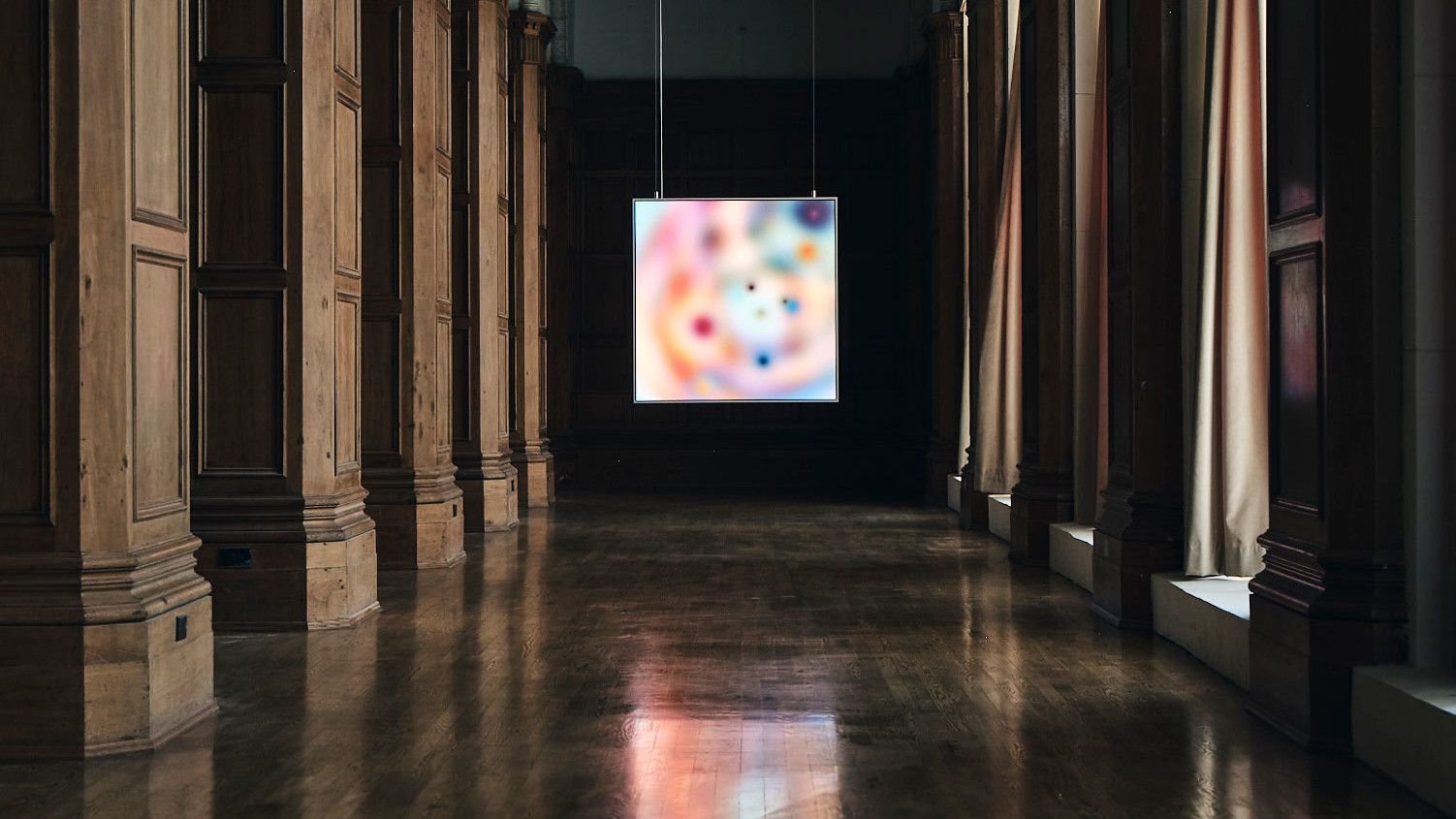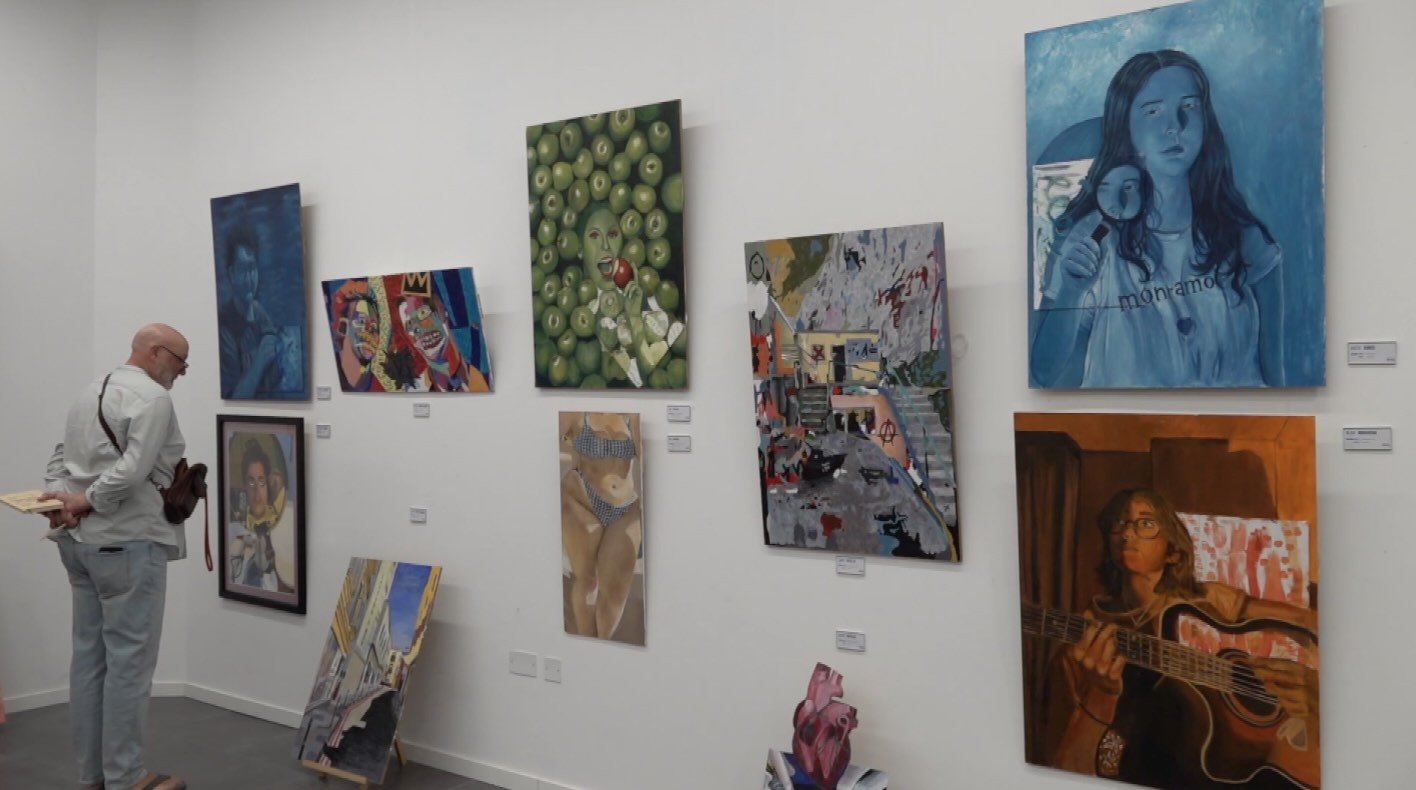
(Credits: Far Out / Adam Jícha / Falco Negenman)
The contentious debate surrounding conspiracy theories about the existence of UFOs (unidentified flying objects) seems to not just be what forms a three-hour-long Joe Rogan podcast. On the contrary, the fascination surrounding UFOs, and perhaps also the sighting of them, if they really do exist, is a phenomenon that has been around for ages.
Scientists and art critics have analysed artefacts, such as early cave paintings that seem to represent what are believed to be UFOs. Bobble-headed creatures with bug-like eyes and antennas, flying disks in the sky, and much more. But can we really be sure that these are what UFOs look like, or have we just grown accustomed to what the human mind has imagined them to look like?
One of the first examples of a UFO-looking figure in an artwork was identified in an Italian cave painting from c.10,000 BC. It features a cult-looking group of figures casting a spell on an alien-looking specimen with abnormally long arms that wrap around a smaller alien person. What’s creepy is that the arms of the larger alien also seem to be the antennae that belong to the small alien, somehow fusing them.
It’s rather wild to think that a belief in aliens might have been established even before Christ walked on water. However, I wonder if our interpretation of this cave painting depicting aliens is because we haven’t grown accustomed to seeing humans being portrayed in this unrealistic and anthropomorphic way. Indeed, the further we go back into art history, the more humans were represented as simple stick figures with geometric bodies. It was only much later, when artistic principles prioritised hyper-realism, such as Renaissance and Baroque, that we changed the way humans were portrayed in paintings.
Carlo Crivelli’s The Annunciation with Saint Emidius of 1486 is another example of a UFO sighting. What seems to be a seemingly ordinary religious painting of the Annunciation is actually very futuristic and dystopian. First of all, why is there an abnormally large pickle and apple sitting on the tiled floor? This randomly comical detail is suddenly interrupted when one notices the Virgin Mary being targeted by a laser-like light shining down from the sky.
Traditionally, the Annunciation is painted with the Virgin being doused in a golden light, greeted by the graceful Angel Gabriel. Instead, here it looks like she is being targeted from the heavens by a light that is more akin to Tweety’s laser pointer from the Looney Tunes than the divine light of God.
Some artworks haven’t even been left up to interpretation and flatly announce the presence of a UFO. That’s the case with Hans Glaser’s Celestial Phenomenon Over Nuremburg of 1561. In this illustrated newspaper-looking artefact, Glaser explicitly portrays the sighting of a “dreadful apparition” above the city, in which flying objects battle each other in the sky. There’s a large black spear-headed object looming over the city and smaller coloured objects flying around the sun.
Glaser’s broadsheet is arguably the closest we’ve gotten in recent times to proving that UFOs have always existed and might have been spotted, but I might be closer to moving to Mars than waiting for a web-footed specimen to come knocking at my door.
Related Topics







